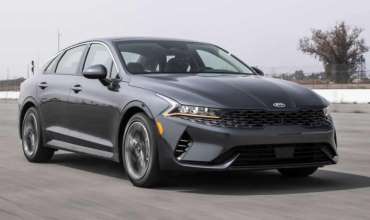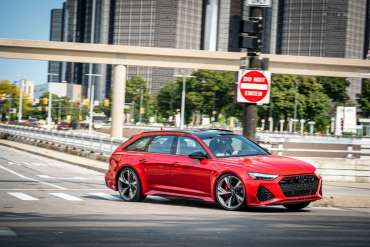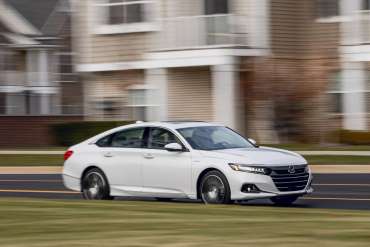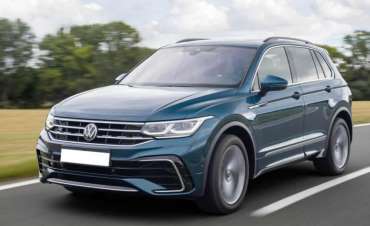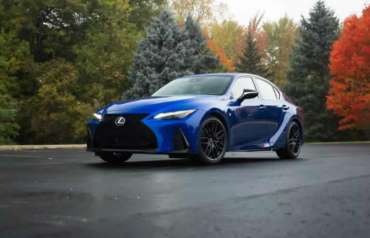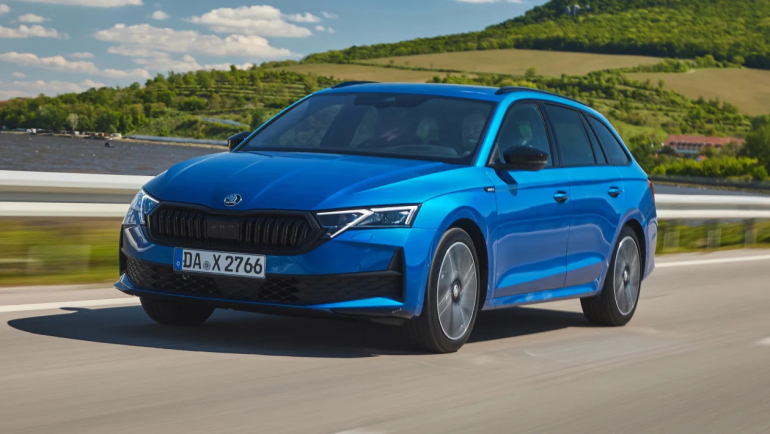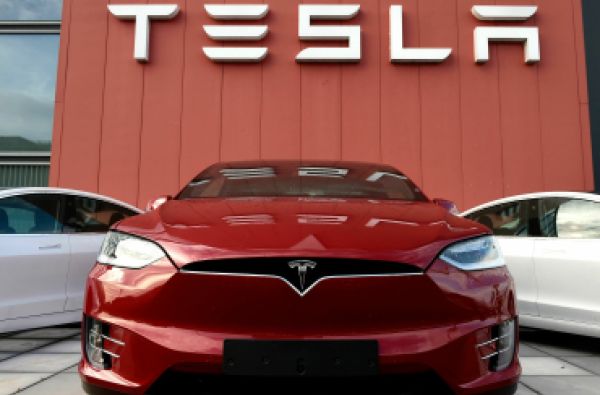
Worldcarblog.com
2021 Kia K5 Pros and Cons Review: Better Than Accord?
Previously known as the Optima, Kia's new family sedan tries to stand out in a competitive segment.
The 2021 Kia K5 is trying to impress. This midsize sedan replaces the Optima in North America and adopts sportier styling than that of its predecessor. The Optima wasn't really known for its dynamic experience—it was a nice sedan that didn't impress or disappoint. With the K5, however, Kia seeks to change that. An all-turbo powertrain lineup, available all-wheel drive, and a spacious cabin all help the K5 generate some buzz in the still-crowded midsize sedan segment.
Whether you like it or hate it, the K5 is easily spotted in a crowded parking lot. The front end gets a new iteration of Kia's "tiger nose" grille and adds fake air vents, plus those Z-shaped daytime running lights. The rear is more mature, as it adopts dual exhaust tips and taillights that connect via a thin LED strip. The flashier exterior made an impact on our judges—some welcomed the new styling direction, but testing director Kim Reynolds described it as "more alien than interesting."
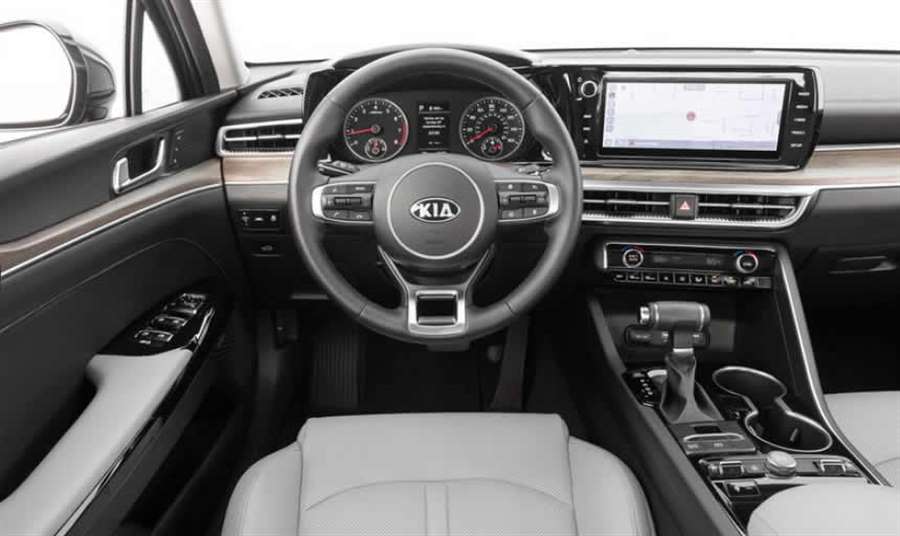
Sharing its platform and powertrains with the Hyundai Sonata, the K5 has a turbocharged 1.6-liter four-cylinder base engine with 180 hp and 195 lb-ft of torque. The optional turbo 2.5-liter is only available in the GT model, where it produces 290 hp and 311 lb-ft of twist. With its extra power, the K5 GT is much punchier than the Honda Accord 2.0T and delivers more torque than the Toyota Camry V-6.
Naturally, the 2.5-liter became the favorite among judges, as it made the K5 more fun to drive. The GT also handled well in our figure-eight test (though its sport suspension delivered a stiff ride on the street). We were especially thankful that Hyundai and Kia are still differentiating these platform-sharing cousins at a time when many automakers are dropping out of the sedan segment altogether.
With the Hyundai Sonata also participating in this year's competition, judges tried to find the differences between both (besides the sheet metal). "There was a spell when their products were very different from one another, but after getting out of the Sonata N-Line and into the K5 GT, the lines are increasingly blurred," features editor Christian Seabaugh said.
Although the Kia K5 and Hyundai Sonata drive similarly to each other, the differences were more notable inside. Our top-of-the-line K5 EX came with heated and ventilated front seats, a heated steering wheel, a 10.3-inch touchscreen with Apple CarPlay and Android Auto compatibility, and a panoramic sunroof. When compared to the Sonata SEL Plus, which is a trim below the fancy Sonata Limited, the K5 EX misses some important features, such as a digital instrument cluster and the ability to use your smartphone as a key. The "Smaht Pahk" feature that made the Sonata a star during the Super Bowl is also not available in the K5. But with a $32,355 price tag, this K5 EX offered a lot of bang for the buck.
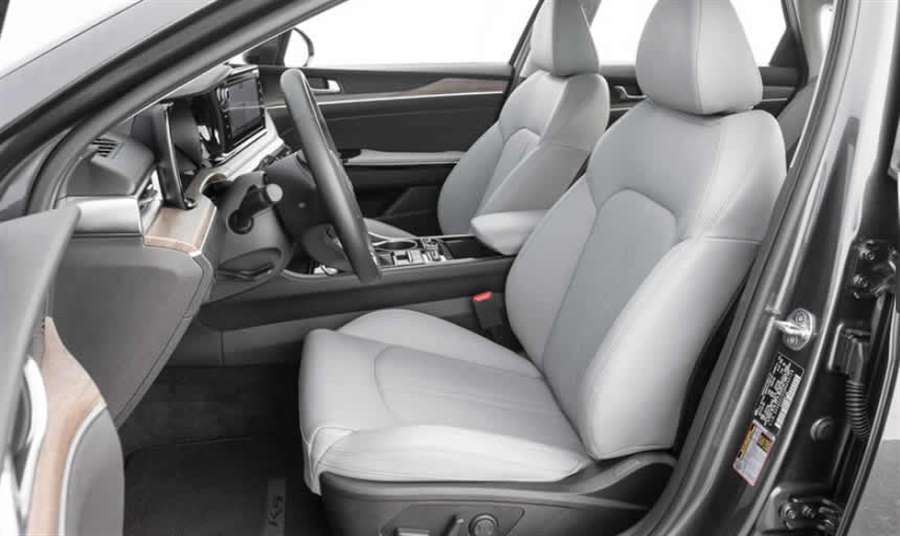
We had mixed opinions when it came to the interior styling. Some judges preferred the K5 and its traditional shifter, but others liked the Sonata's airy cabin, a result of its compact button shifter. "As much as I like the fake wood trim and the different dash, I don't think the K5's styling will age well," Motortrend Buyer's Guide director Zach Gale said. On the other hand, editor-in-chief Mark Rechtin preferred the K5's driver-oriented center console: "Everything is within easy reach."
Although the K5 brings significant changes to Kia's midsize sedan, it didn't have enough to move the needle for our editors. And even though it stands out among the competition in terms of design and optional powertrains, it continues to be overshadowed by the Accord (and perhaps even the Sonata).
Source: mototrend.com
Tested: 2021 Audi RS6 Avant Is About More Than Numbers
Audi's new RS6 Avant wagon is even more special than its 591-hp twin-turbo V-8 and 3.1-second 60-mph time implies.
Ever hear of left-digit bias? It's the reason ShamWows cost $19.95 instead of $20 and why people say they're 39 instead of 40. We focus on that first digit and assign it undeserved importance because our cave-dweller brains are easily tricked. This is why the 2021 Audi RS6 Avant's certifiably ballistic 60-mph time of 3.1 seconds seems, in a bizarre way, mundane. If that time were two-tenths of a second quicker, we'd be petitioning for National RS6 Day, a time to celebrate and reflect on the RS6's righteous and scarcely believable acceleration. Instead, we're like, "Yeah, about what we expected." Can you really even feel the difference between a 2.9-second and 3.1-second run? Sure, to the same extent you notice that five-cent difference in the pretax price of ShamWows and a $20 bill, which is to say barely at all. But thanks to left-digit bias, the RS6 Avant puts us in the unusual position of apologizing for numbers that should require no apologies.
HIGHS: Mind-melting, brain-rattling V-8; light-footed dynamics; fun for the whole family.
Those numbers include the output from the twin-turbo 4.0-liter V-8—591 horsepower and 590 pound-feet of torque—and the quarter-mile run of 11.5 seconds at 120 mph. These are impeccable performance bona fides, though maybe not what we consider supercar numbers these days. Then again, this is a station wagon. That's easy to forget when you're behind the wheel, looking out over those flared front fenders (2.5 inches wider than a standard A6's) and listening to the turbos and sport exhaust carry on a lively banter of chuffs and thunder. The cargo area is capacious and practical and hidden by a slick motorized cover, but you'll want to lash down those groceries because what's behind you tends to slip your mind when your skull is crushed into the headrest with the force of gravity (and then some). Activate launch control and you might see the gauge-cluster accelerometer spike at 1.19 g's, as we did. That'll scramble your eggs and your inner ear.
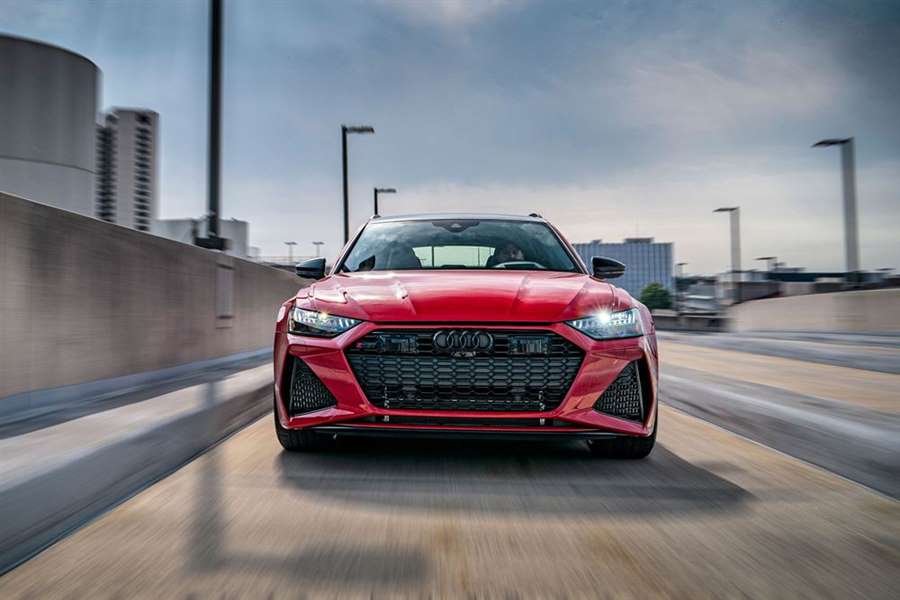
The Avant isn't just a drag-strip specialist, though. Like many of Audi's RS forebears, the RS6 is seemingly handicapped by a front-loaded weight bias, that V-8 overbite saddling the nose with 55.0 percent of the car's heft. But in practice, the RS6 feels perfectly balanced and even a little tail-happy thanks to the magic of torque vectoring and four-wheel steering. The rear sport differential can send almost all the torque to one side or the other, collaborating with the rear steering to endow the big Audi with instant turn-in. Add some throttle with your steering lock—which in a nose-heavy all-wheel-drive car would normally result in tragic understeer—and the rear end will start to swing wide while the front holds the line. The RS6 Avant is the unlikely 5031-pound car that can dance. Again, don't get too obsessed with the at-the-limit numbers (in this case, a middling 0.94 g on the skidpad). It feels plenty grippy when you're bombing down your favorite off-ramp.
LOWS: Thirstier than a salmon in the Sahara, exotic price.
So Audi nailed the essentials, and—here's the tricky part, sometimes—it did it with panache. Just look at this thing. Is this not the meanest wagon yet conceived by humankind? After an initial 10-minute drive, we had two text messages from neighbors who'd seen the car on the road. Sample: "Was that an RS6? Is Audi finally bringing that back to the U.S.? Woooowww." The basic shape and stance are so perfect that you recognize this car from 100 paces, but it's also interesting when you zoom in on the details. Check out the yellow decals inside the headlights, warning you not to stare because there are lasers in there. Or the Audi Sport puddle lights when you open the front doors at night. Or the optional blacked-out Audi logos on the grille and hatch. All of it works to reinforce the message that this isn't the Allroad. Maybe the AllRoadCourse.
The RS6 Avant can pretend it's reasonable family transportation if you relax the adaptive suspension and ignore the button on the steering wheel labeled "RS Mode." But that's a difficult button to ignore. The RS modes (two of them, in ascending order of depravity) are customizable, but both of them sharpen the Avant's responses and generally serve to amplify the fun, even jacking up the idle so the car feels like it's straining the leash when it's stopped. You can, of course, make the exhaust louder by selecting either of the RS modes, but in this car, the rumble out back is always rivaled by the soundtrack from the intake. Turbos normally whoosh. The RS6 Avant's sound like Lord Gorg just exited the airlock of his starship to announce an important revision to the food chain and your new position therein.
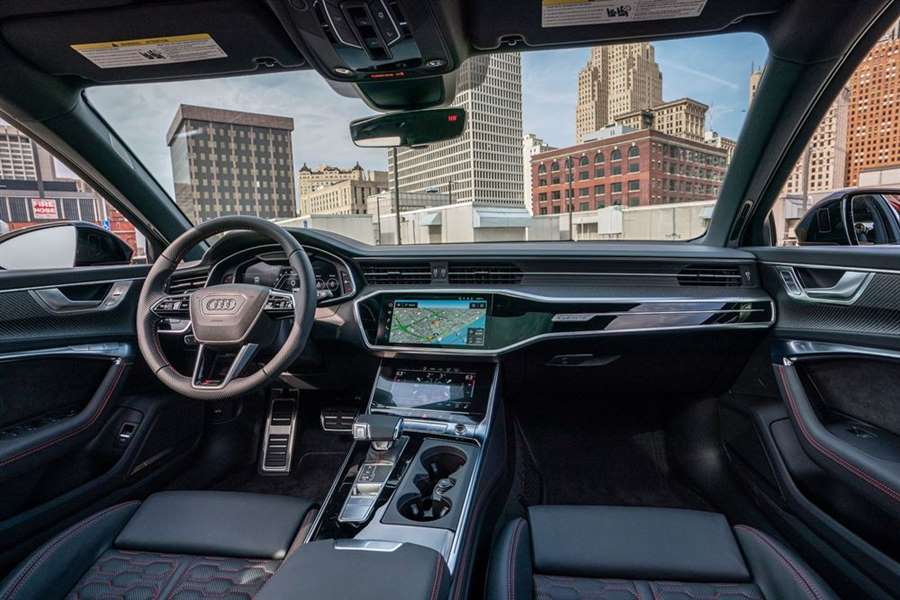
The RS6 drawbacks, such as they are, tend to fall into the category of self-owns. For instance, the RS6's sleek interior touchscreens on the center stack (a 10.1-inch upper display and an 8.6-inch lower one) look minimalist, which is appropriate since they're minimally functional. Why did Audi kill the scroll knob? If you want to change a radio station, you can use the touchscreen, steering wheel buttons, or volume knob toggle, all of which work equally badly. Try to jump more than two or three stations and the system has a CPU fart and freezes where it is. At first we just thought the car really loved Ozzy's Boneyard.
And there's a lot of hardware crammed into that nose. (That's not unprecedented: The 2003 RS6 engine bay was so cramped you had to drop the front anti-roll bar to do an oil change.) Cooling fans tend to run for a long time after you shut down the engine. The fuel economy stinks—17 mpg combined, per the EPA. And top speed is restricted to 156 mph instead of a claimed 190 unless you ante up for the carbon-ceramic brakes, which cost $8500. You're telling us that the standard 16.5-inch front and 14.6-inch rear rotors can't handle 190? That's so unfair we're going to our room and slamming the door.
But we won't stay mad, because the RS6 Avant validates enthusiasts with its very existence. In a world lousy with 600-hp SUVs, we don't have nearly enough 600-hp wagons. Note that we didn't say "affordable 600-hp wagons." Audi says it builds a two-digit number of RS6 Avants per day at its Neckarsulm plant in Germany, but it'd surely make more if it could find a bigger crowd of buyers willing and able to trade tall stacks of hundred-dollar bills for a rally family sport wagon.
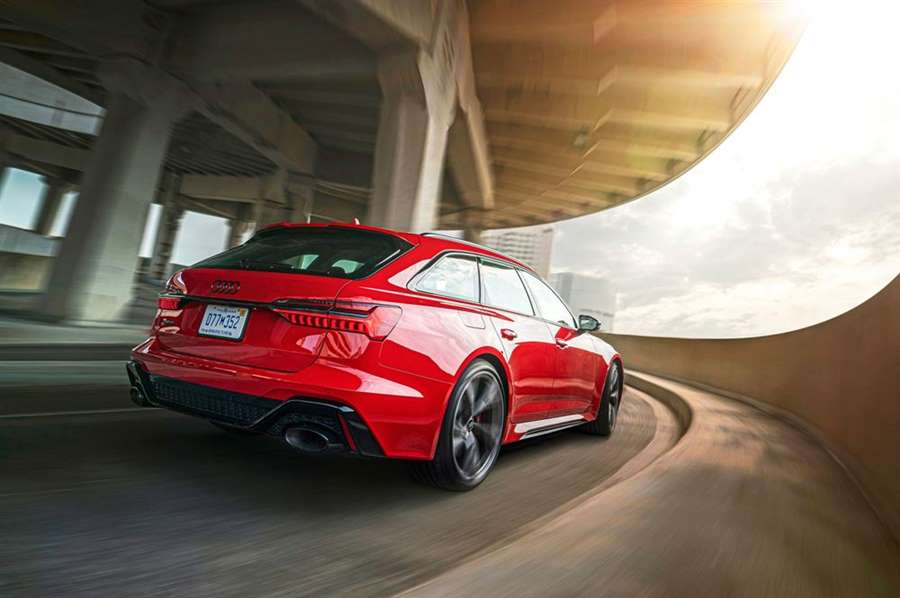
Greatness doesn't come cheap. And left-digit bias, pervasive as it is, has its limits, as exemplified by the RS6's $110,045 base price. It's not like $110,050 is some talismanic psychological threshold for financial responsibility. And in any case, adding a few options quickly bumped our as-tested price to $119,840. But that price looks pretty good when you compare the RS6 with its corporate cousin, the Porsche Panamera Turbo Sport Turismo, which is similarly rapid but costs $158,350 before you so much as color in those crests.
Normally when we argue that there's more to a car than its numbers, we're talking about something like a Mazda Miata, which doesn't look quick on paper but is a joy to drive. The RS6 Avant actually does put up some monster numbers. But the experience is even better.
Source: carandriver.com
Mercedes-AMG C 63 S Charon Has More Than Meets The Eye
Poland-based Auto Dynamics just unloaded its new tuning package for the Mercedes-AMG C 63 S codenamed as “Charon”. On the outside, the Merc appears almost the same as its standard version but as the saying goes, “beauty is only skin-deep”, there’s more to the car than what the eye can see.
Beneath the hood of the base AMG C 63 S lies a 4.0-liter twin-turbo V8 engine with 503 hp and 516 lb-ft of torque. However, thanks to the AD850+ performance package of the tuner, additional 340 hp and 200 lb-ft can be squeezed out from the car, which brings its total output to a whopping 843 hp and 716 lb-ft of torque.
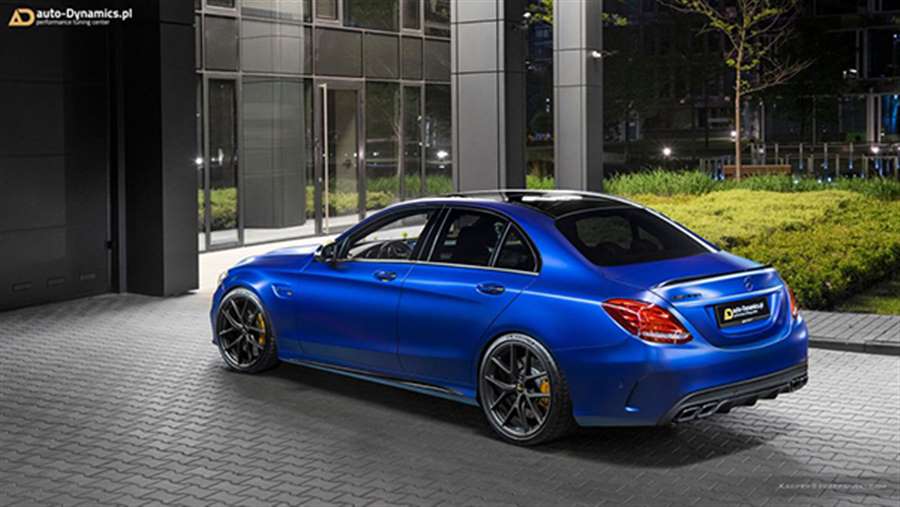
The package includes an ECU tuning as well as a new set of TTE turbochargers, a sports catalyst, Supersprint downpipes, and cat-back exhaust system with adjustable valves from Remus Innovation. The power modifications are also complemented by Eventuri carbon-fiber intake with upgraded air intakes for better air circulation, Weistec ASV/BOV blow-off adapter, Wagner Tuning carbon air injectors, and Weistec sump for the AMG Speedshift transmission.
Meanwhile, the exterior of the Mercedes-AMG C 63 S gets a mild makeover with the AD Black Star body kit of Auto Dynamics. The package includes a blacked-out Panamericana grille, door handles, and the tuner’s badges. Lastly, it is topped off with a set of 20-inch BBS wheels wrapped in Michelin Pilot 4S tires complete with lowering springs by Eibach and Fischer Stahlflex brake lines.
Source: mercedes-world.com
2020 Kia Niro PHEV Review: Old-School Hybrid With Old-School Issues
The verdict
The Kia Niro Plug-In Hybrid’s efficiency, practicality and utility are outweighed by its unpleasant driving experience.
Versus the competition
Newer, next-generation plug-in hybrids are here, and they feel far more refined than the Niro PHEV while offering up competitive technology, comfort and, in some cases, superior range — not to mention all-wheel drive.
I was about 5 miles into my first spin behind the wheel of a 2020 Kia Niro plug-in hybrid when I realized this was not going to be a pleasant motoring experience. Those 5 miles made me realize just how much electric and plug-in vehicles have improved in the past decade. Gone from most of the market’s electrified vehicles are those artificial-feeling brakes, numb steering, odd powertrain noises and nonlinear, jerky, odd acceleration and deceleration qualities. “Most” is the operative word here, though, as I’ve apparently found one vehicle that hasn’t gotten the memo yet — the Niro Plug-In Hybrid. This crossover-style wagon has a few issues in terms of how it drives and performs, but if it’s as efficient as it seems to be and provides a decent amount of occupant room and cargo space, is that enough to overcome its driving deficiencies?
What’s It Packing?
The Kia Niro comes in three flavors: hybrid, plug-in hybrid and pure electric vehicle, the difference being the size of battery pack each car has and how far it can drive in electric-only mode. The hybrid has no plug-in ability and operates much like any other hybrid out there, while the EV has no gasoline motor to help it recharge on the go, meaning it operates only in electric mode. The PHEV version is kind of the best of both worlds — it operates first and foremost in electric mode but uses its onboard gas engine to keep the vehicle moving and recharge the batteries when they’re depleted. Plus, it provides extra propulsion even when they aren’t. The PHEV version can also be plugged in to refill the battery, allowing you to drive in electric mode using land-generated power instead of electricity created by the onboard engine.
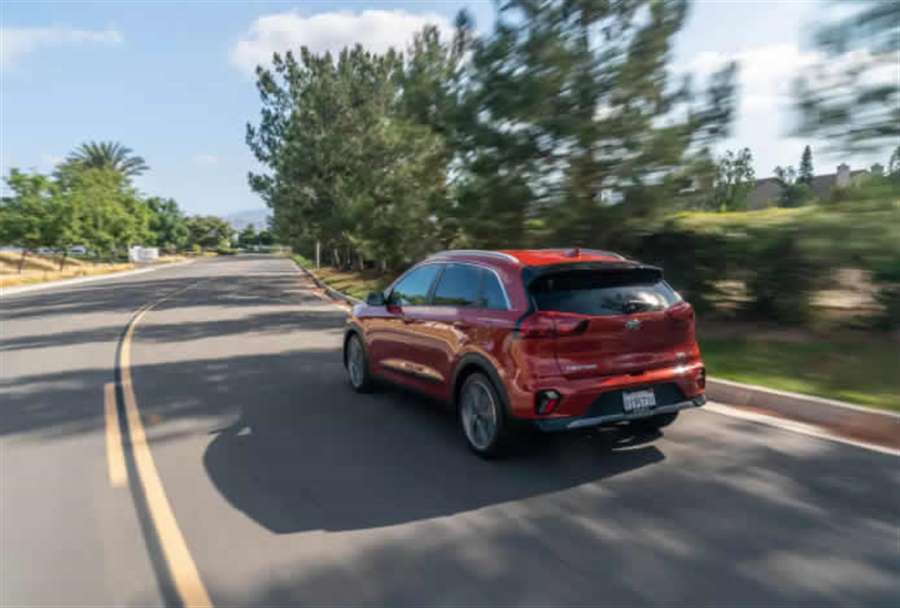
The Niro PHEV is powered by a 1.6-liter four-cylinder engine paired with a 60-hp electric motor for a total system rating of 139 hp and 195 pounds-feet of torque. The system is mated to something rare in a hybrid — an actual automatic transmission. In this case, it’s a six-speed dual-clutch unit. It’s far more common to have a hybrid employ a continuously variable automatic — to more easily make use of the mixing of gasoline and electric propulsion methods — but Kia’s gone for something different here, and it doesn’t work that well. The six-speed transmission does not shift smoothly, especially under deceleration, and seems to be at odds with the electrified gasoline powertrain. The engine and electric motor combination is also less than adequate: Acceleration is slooooow, without any of the zippiness one usually finds in cars with electrified powertrains.
The Niro PHEV feels heavy and ponderous whether you keep it in EV-only mode or allow it to mix in some gasoline-sourced propulsion. It behaves like an old-school hybrid, one from the days in which automakers were still ironing out the interaction and function of hybrid systems. Putting the Niro into Sport mode does not help matters; the brakes are terrible, with an artificial, nonlinear feel. The last 10 feet of any stop sees the mechanical brakes grab with sudden bite, causing head-bobbing among occupants regardless of how carefully and smoothly one tries to bleed off speed. The regenerative braking function has a few settings, controlled by the paddle shifters in normal mode (Sport mode turns them back into gear selectors). The most aggressive regen mode is far too aggressive, again causing passenger discomfort when the driver lifts off the accelerator, while the mildest setting doesn’t seem to do much.
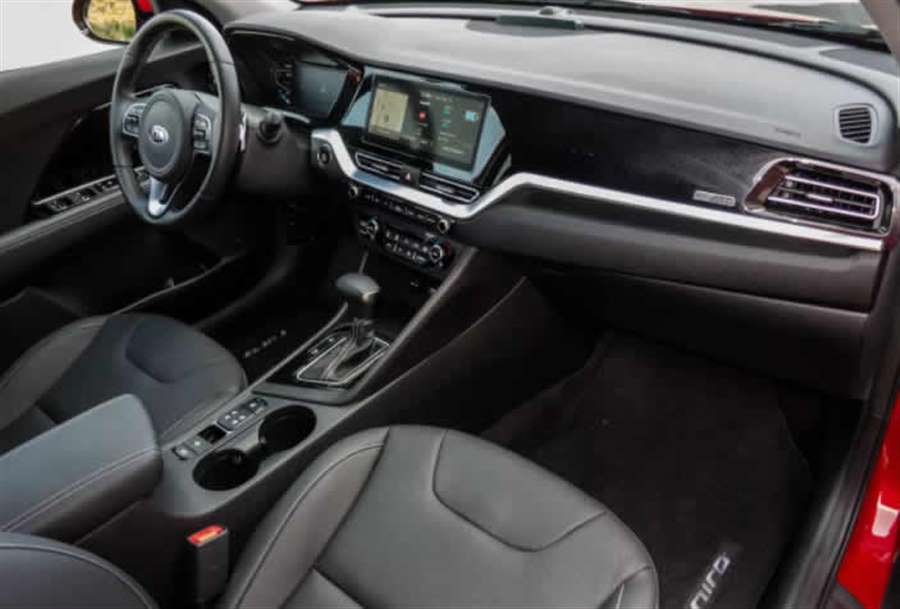
The car doesn’t ride or handle well, either, weighing about 3,400 pounds and featuring slow, highly boosted steering and a stiff ride that transmits a lot of bumps and noise into the cabin. In short, the Niro PHEV simply isn’t a pleasant car to drive.
Scores Points on Practicality
So if it’s not particularly pleasant, does the Niro PHEV at least make up some ground on practicality or efficiency? Yes, it does. Being a plug-in hybrid means it can operate in electric mode for a limited distance before needing to employ its onboard gas engine to keep going, allowing drivers to get to a charging station to refill the battery. It can also use that gas engine to add additional propulsive force (so if you’re in EV mode and floor the accelerator, it’ll add some grunt to the mix) to maintain a certain level of charge on the battery while cruising, or even to recharge the battery while you’re driving. I took the Niro on my traditional plug-in-hybrid testing loop to see how far it would go on electricity alone, starting with a full battery and driving mixed urban streets in EV mode with the climate control off and the windows up until the gas engine kicked on — no hypermiling, just driving normally and smoothly, sticking to posted speed limits.
The Niro PHEV is rated to go 26 miles on electricity only, then topping out at a total range (gas engine included) of 560 miles (assuming the EPA’s gas-only fuel economy rating of 48/44/46 mpg city/highway/combined). My test saw the Niro PHEV best that number, delivering 32.8 miles of observed electric range before the gas engine kicked on — a 26% improvement over what the EPA said the car would achieve. Recharging the fairly small 8.9-kilowatt-hour battery from a household 120-volt outlet should take about nine hours, according to Kia, or 2.5 hours on a more powerful 240-volt charger. (DC fast charging is not an option on the Niro PHEV.) So yes, it does have the expected plug-in hybrid chops, allowing most people to commute electrically the majority of the time and giving drivers options as to how they’d like to allocate power — either maintaining the battery charge by using the gas engine, recharging the battery en route, or draining the battery every time they drive and recharging it at home.
Utility Is Strong, Comfort Is Mixed
The Niro’s practicality isn’t limited to its hybrid efficiency; it genuinely works as a small compact SUV. There’s plenty of occupant space up front and in back, with more than adequate backseat legroom. Cargo room is also surprisingly plentiful, as the batteries for the hybrid system don’t intrude much into that space. Headroom is also plentiful, and the seats are decently sized and supportive. It works quite well as a small family crossover in terms of roominess, efficiency and utility.
Its comfortable seats, though, are tempered by the fact that ride quality is only mediocre, with a lot of bumps and noise transmitted into the cabin. In fact, noise is one of the more troublesome aspects of the Niro PHEV — and not just road and wind noise, but noises the car generates. It feels like it’s always dinging or beeping at you: the moaning low-speed noise all EVs are required by law to broadcast as a warning to sight-impaired pedestrians, the beeping when you shift into Reverse, the welcome noise, the shut down noise, the warnings. The appeal of a quiet EV is never met with the Niro.
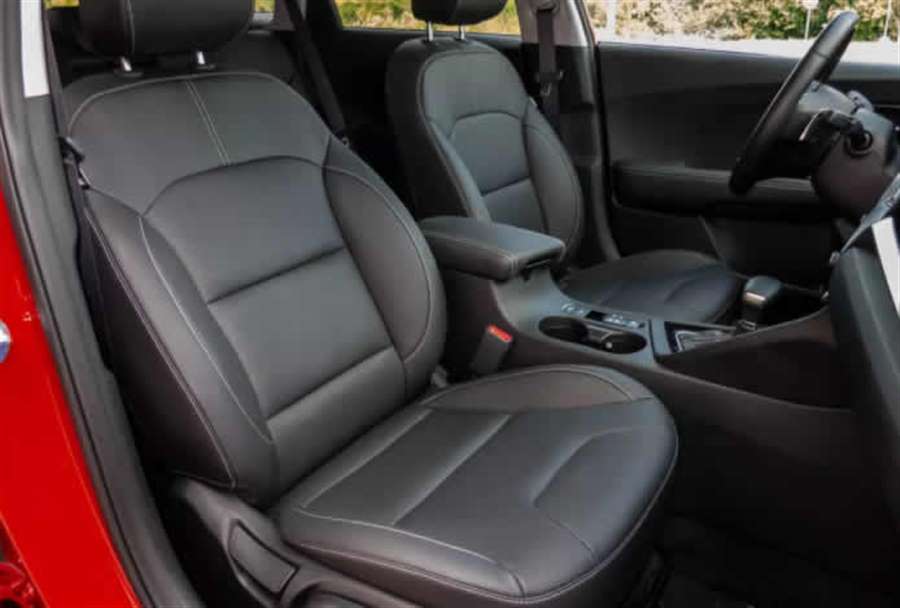
The interior design is also quite good when it comes to the buttons, switches and multimedia system. Kia and its sister brand Hyundai have the secret to a good multimedia system, and while the one in the Niro PHEV might not be Kia’s latest and greatest, it’s still miles better than most. It’s accompanied by plenty of dedicated buttons that are big, easy to locate while driving and very complete. The voice commands are questionable in their function, however: Asking the car to change the radio to SiriusXM’s NPR channel somehow got me navigation directions to the nearest Pier 1 outlet.
At Least It’s Cheap(ish)
The Niro comes in several versions at several prices for the 2020 model year. A plain, basic Niro hybrid starts at a not-inconsiderable $25,710 including destination, while the base Niro PHEV starts at $30,610 and the Niro EV begins at a hefty $40,210. (That said, plug-in models may be eligible for federal or local rebates or tax advantages.) My specific test car was a Niro PHEV EX Premium, which comes nearly loaded for $37,510, with options limited to paint color, cargo accessories and mats. My as-tested price was $38,085 before any tax credits.
Stacking the Niro PHEV up against a proper competitor is not easy given few other plug-in hybrids offer the same body style as the Niro — a tall sort-of-crossover, sort-of-SUV, sort-of-wagon. The closest competitor might be the Subaru Crosstrek Hybrid, which went all plug-in for the 2018 model year and starts at nearly $5,000 more than the Niro PHEV. The Subaru does have a few advantages, however, such as standard AWD and Subaru’s standard safety systems, but it doesn’t achieve the Niro’s range, with only 17 miles EV-only and 480 miles overall.
Two plug-in hybrid SUVs are available for 2020, one from Ford and one from Toyota. The 2020 Ford Escape Hybrid PHEV is front-drive only, as is the Niro PHEV, and starts a little more than $3,500 higher than the Niro PHEV. It features more interior space and greater range: 37 miles EV and 530 miles overall. Another AWD option is the 2021 Toyota RAV4 Prime, which has a range of 42 miles EV and a bladder-busting 600 miles overall — but costs a whopping $8,600 and change over the base price of a Niro PHEV.
There are better plug-in choices than the Niro PHEV these days. It feels a generation behind many of its hybrid and plug-in contemporaries in terms of powertrain refinement, and its practicality, efficiency and utility sadly don’t outweigh its general unpleasantness to drive.
Source: cars.com
Tested: 2021 Honda Accord Hybrid Polishes a Winning Formula
A range of subtle updates for the 2021 model year improve the Accord's tech quotient without altering its excellence.
The Honda Accord offers an unusually broad breadth of appeal. Among the family sedan's many trims and powertrains, there's truly something for everyone—and each version is mighty compelling in its own way. There are affordable models for those on a budget, Sport models with handsome curb appeal, the upscale Touring trim offering near-luxury interior appointments, and the Hybrid providing fuel efficiency without sacrificing refinement. Honda has revised the lineup for 2021, but there's little need for hand-wringing here. Besides the elimination of the six-speed manual transmission, there isn't anything in the refresh to diminish the Accord's overall excellence. And it improves in a few meaningful ways.
Nip and Tuck
If Honda's freshening of the Accord for 2021 seems especially light, that's because it is. Tweaks at the front include a slightly wider grille and updated lighting elements, which include all-LED arrays on EX trims and above. Inside, the previously optional 8.0-inch infotainment touchscreen is now standard, and Honda has added rear-seat USB ports, a wireless smartphone charging pad, and wireless connectivity for Apple CarPlay and Android Auto as options.
HIGHS: Smooth and efficient powertrain, upscale trims deliver a near-luxury look and feel, generous standard features.
Safety and driver-assistance features are improved for 2021 as well. Honda recalibrated the Accord's lane-keeping assist and adaptive cruise control systems to behave more naturally. After a brief drive on the highway in heavy traffic, we can confirm that the adaptive cruise control no longer exhibits the rubber-band behavior of the 2020 model, instead allowing the Accord to slow more gradually as it approaches traffic and quickly get back up to speed once the left-lane dawdlers move over.
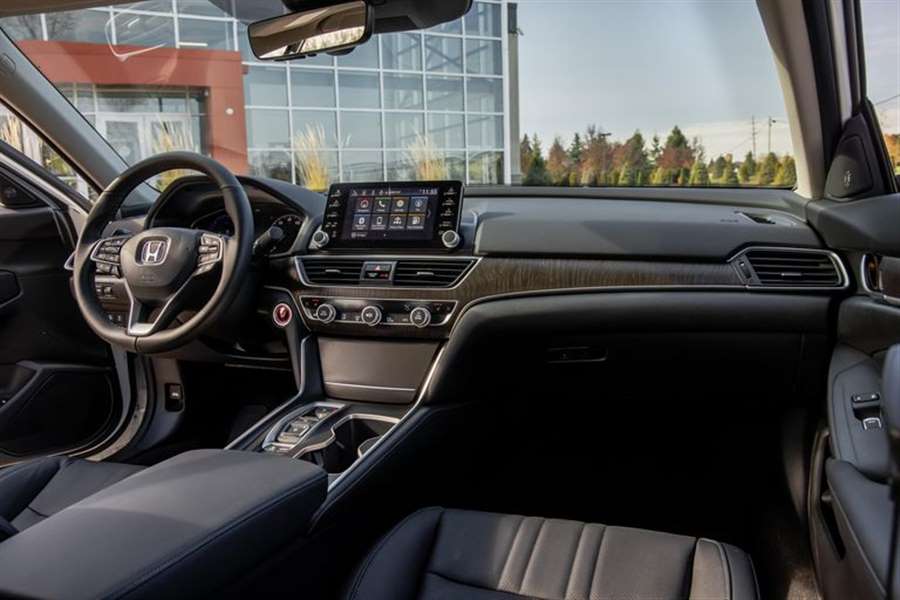
Our $38,050 Touring Hybrid test vehicle came loaded with features, including a head-up display, heated and ventilated front seats, leather upholstery and attractive 19-inch wheels. It also featured a new low-speed automated emergency-braking system that will apply the brakes if the driver is about to bump into an object at speeds between 1 and 5 mph. The only option was the sparkly Platinum White Pearl paint job, which cost $395.
Under the Hood
The Accord's crisp handling, balanced ride, and quiet cruising demeanor all carry over unchanged. The suspension tuning strikes a nice balance, with the Accord delivering confident handling while managing to expertly edit out road imperfections.
LOWS: Styling updates are a little too subtle, clamorous engine sound under heavy throttle, EV mode only goes for about one mile.
Honda made some slight adjustments to the hybrid system's power delivery for 2021, with the intention of providing stronger acceleration in Sport mode. The alterations are predictably subtle. At our test track, the 2021 model pulled off a 7.1-second zero-to-60-mph time, which is similar to the last version we tested in 2018. What's more noticeable are the changes to the power delivery in the normal driving mode, which exhibits a calmer demeanor under acceleration.
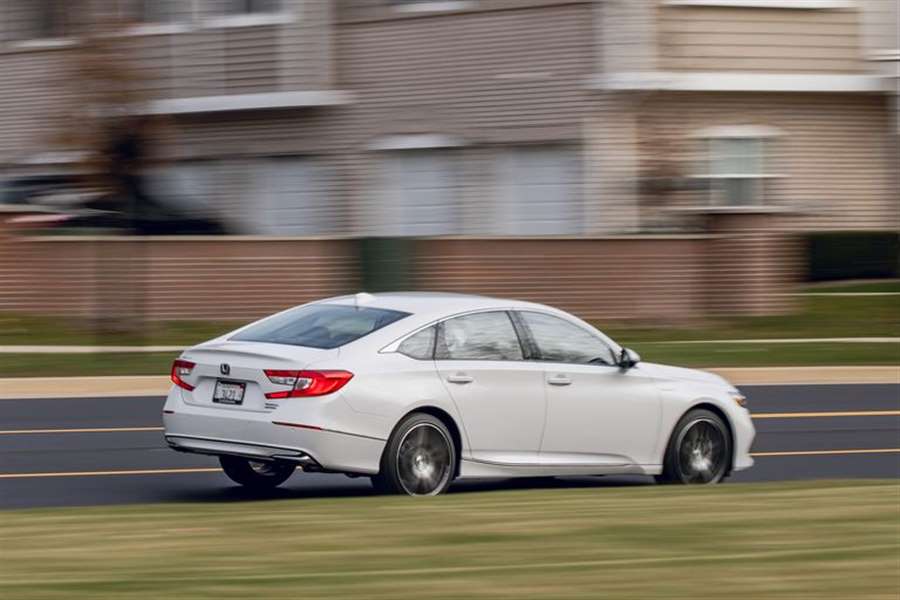
The Honda's hybrid powertrain is unlike any other in the market. The 143-hp 2.0-liter inline-four can generate electricity or directly drive the wheels in low load situations (think highway). In most situations, the 181-hp electric motor provides the propulsion. When you crack the whip, both the engine and motor combine for 212 horsepower, but off the line the Accord feels like a torquey EV because that's what it is; the electric motor makes 232 lb-ft of torque at 0 rpm.
As in the pre-facelift models, the 2021 Accord Hybrid still exhibits some coarse grumbles from the engine under heavy throttle. Fortunately, fuel economy remains practically the same, with the 2021 model's EPA combined estimate remaining 48 mpg and the highway score moving up a tick from 47 to 48 mpg. But that's for the lower-spec models riding on 17-inch wheels. The Touring trim rides on 19s and carries a 43-mpg combined and a 41-mph highway rating.
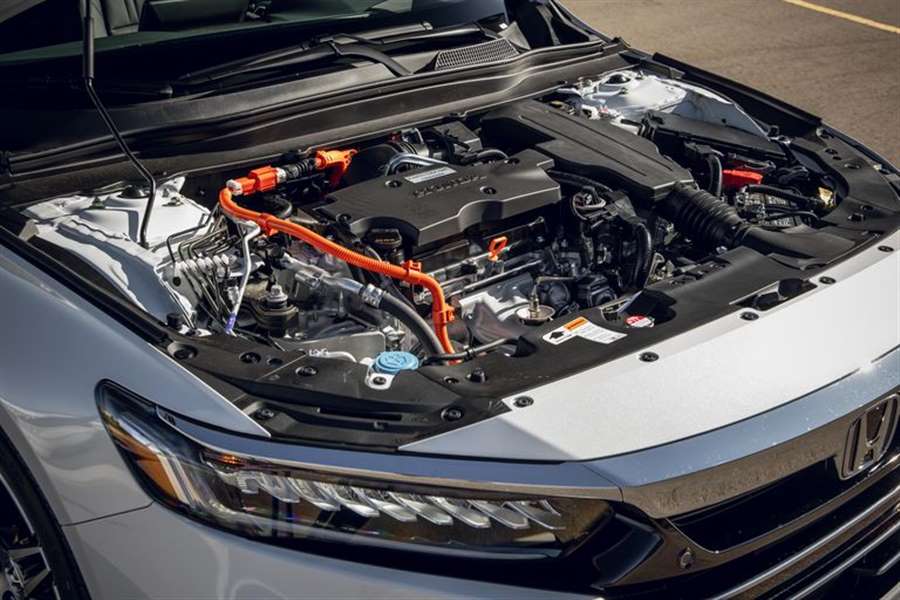
These updates, as minimal as they are, provide meaningful enhancements to the Accord's appeal without deviating from its winning formula. The alterations to the hybrid powertrain may not result in measurable improvements at the test track, but they help deliver a subjectively better driving experience. And the fact that Honda resisted the urge to jack up the price means that the Accord Hybrid Touring remains an outstanding anomaly—a luxurious sedan that gets economy-car mileage, no sacrifices required.
Source: caranddriver.com
Volkswagen Tiguan Review
The Volkswagen Tiguan has an upmarket, spacious and practical interior, plus great engines and comfortable drive. It’s now been updated for 2020.
Is the Volkswagen Tiguan a good car?
Remember the Volkswagen Tiguan ad, with the ‘cool’ dad dropping his kid off at school? Well, the new VW Tiguan is even cooler, and it’s on sale now, priced from around £500 less than the outgoing car.
The cheapest VW Tiguan you can buy is the 130hp 1.5-litre petrol model with front-wheel drive and a six-speed manual gearbox. It costs from £24,915 and is only available in one trim level – the imaginatively named ‘Tiguan’ trim.
It comes with 17-inch alloy wheels, LED headlights, an 8.0-inch touchscreen infotainment system with wireless Android and Apple smartphone mirroring, automatic emergency braking and lane-keeping assist.
Next-up is the Tiguan Life model. This comes with a 130hp or 150hp version of the 1.5-litre petrol engine and has the option of a seven-speed automatic gearbox. You can also get a 150hp 2.0-litre diesel engine, which gets this automatic gearbox as standard.
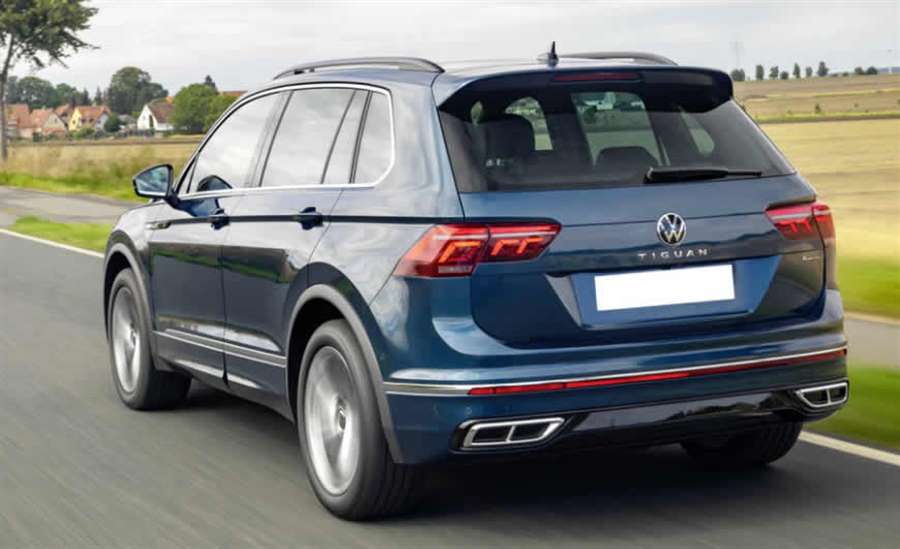
Volkswagen Tiguan, photo: carwow.co.uk
Whichever engine you pick, you get 18-inch alloy wheels, tinted rear windows, three-zone climate control and lumbar adjustment for the front seats as standard, along with front and rear parking sensors, adaptive cruise control and traffic-sign recognition. These cars cost from £26,915 for a 130hp 1.5-litre petrol engine with a manual gearbox.
Elegance cars come with 19-inch alloy wheels, Matrix LED headlights, exterior chrome trim and silver roof rails. Inside, you get 30-colour ambient lighting, heated front seats, light-up door sills, a panoramic glass roof and a 10.25-inch digital driver’s display instead of analogue dials. Elegance models cost from £32,430 for a 1.5-litre 150hp petrol-powered car with an automatic gearbox.
R-Line versions get a sporty bodykit, 20-inch alloy wheels, lowered suspension and automatic LED headlights. Inside, you get the same mood lighting and digital driver’s display as Elegance versions, but the more supportive sports seats are exclusive to R-Line cars. These cars cost from £32,730 for versions fitted with a 1.5-litre 150hp petrol engine and an automatic gearbox.
You can get both Elegance and R-Line models with a 150hp petrol, 150hp diesel or 200hp diesel engine – all of which get a seven-speed automatic gearbox as standard. The 200hp diesel-powered models come with four-wheel drive as standard, and you can pay extra to have this fitted to 150hp diesel models, too.
The previous Volkswagen Tiguan was, and still is, a big seller, so it’s no wonder VW has barely changed the exterior look for the new 2021 model. That said, the new car’s bonnet is higher and the grille has been made wider to make this Tiguan resemble the larger, more expensive Volkswagen Touareg.
High-spec cars also come with a set of new, brighter, matrix LED headlights, which can automatically adjust their beams to avoid dazzling other drivers. As an added bonus, they should never wear out or need replacing.
The bumpers at the front and rear have also been altered with some redesigned air intakes and new black plastic trim, but the new car looks almost identical to today’s Tiguan from the side – even down to the chrome strip above the side skirts and the silver badge under the wing mirror.
The Volkswagen Tiguan is hugely popular for good reason. These updates should only help to cement that.
Mat Watson, carwow expert
Volkswagen has also announced it’ll build a high-performance Tiguan R for the first time. The Tiguan R is easy to spot thanks to its pumped-up body kit and 21-inch alloy wheels. It also has a 2.0-litre 320hp turbocharged petrol engine, bigger brakes than a normal Tiguan and four tailpipes for the exhaust.
While the Tiguan R offers high-speed thrills, the new Tiguan e-hybrid is all about efficiency. It’s a plug-in hybrid (PHEV) that can drive for around 30 miles on electricity alone – enough for most morning commutes. You can drive at up to around 80mph using just the electric motor, though that will run down the batteries pretty quickly.
You can also use the engine to charge the battery while you’re driving, or drive without using the batteries and electric motor at all – so you can save their charge for later when you’re in town or stuck in traffic. It’s best to charge up using a plug, of course, which you can do overnight.
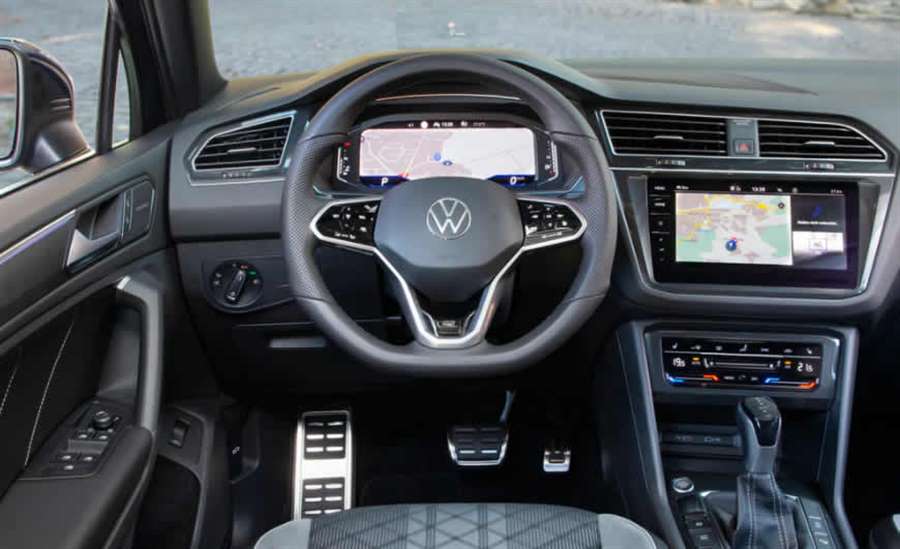
Volkswagen Tiguan, photo: carwow.co.uk
Fuel economy figures haven’t been announced but it’ll likely be a strong performer: expect official figures in the hundreds, though you will only get near that on short journeys and with regular plugging-in. The Tiguan’s total power output is 245hp so it should be pretty quick as well as efficient.
One of the biggest differences between the old and the new cars’ interiors are the climate controls. These now have touch-sensitive sliders, rather than physical buttons, that you swipe left and right to control the fan speed and temperature. There’s also a new, but optional, 10-speaker, 480 watt Harman Kardon stereo system.
The latest Tiguan comes with MIB3 – not a reference to a Men In Black sequel, but VW’s latest infotainment software that the Tiguan shares with the new Golf. Depending on the specific model you choose, this MIB3 system includes a range of internet services including map updates, internet radio and Apple Music.
It also has voice control that’s supposed to understand ordinary speech. However, that system had flaws when we tested it in the latest VW Golf.
The new Volkswagen Tiguan comes with a range of upgraded automated driving systems, including an advanced cruise control that can steer, brake and accelerate for you. VW says that to do this the driver must keep their hands on the steering wheel at all times, and it has fitted sensors and alarms that’ll warn you if you don’t.
The new Tiguan can also automatically alter the car’s speed according to local speed limits, town boundary signs, junctions and roundabouts.
We haven’t yet driven the Volkswagen Tiguan, but will post our opinions as soon as we do.
Source: carwow.co.uk
2021 Lexus IS 350 Review: Refocused but Not Rejuvenated
The verdict
A few mild updates keep Lexus’ sporty IS sedan alive and kicking, aimed squarely to capture the few remaining sports sedan buyers left on the market.
Versus the competition
The updates don’t go deep enough to make the IS 350 fully competitive against newer, fresher, faster rivals like the BMW M340i, Genesis G70 or Acura’s new TLX.
The beautiful thing about so many people starting to abandon entry-level luxury sedans for entry-level luxury SUVs and crossovers is that for the few remaining players in this class, a change is taking place. This is becoming especially obvious at the Japanese luxury brands, where instead of abandoning compact sports sedans, they’re changing their focus. No longer are they just entry-level models; the latest ones are being realigned specifically to be appealing sports sedans. The thinking goes that anyone still looking at a sedan over an SUV is really in it for the style and fun-to-drive factors, so why not make them the main focus of the car?
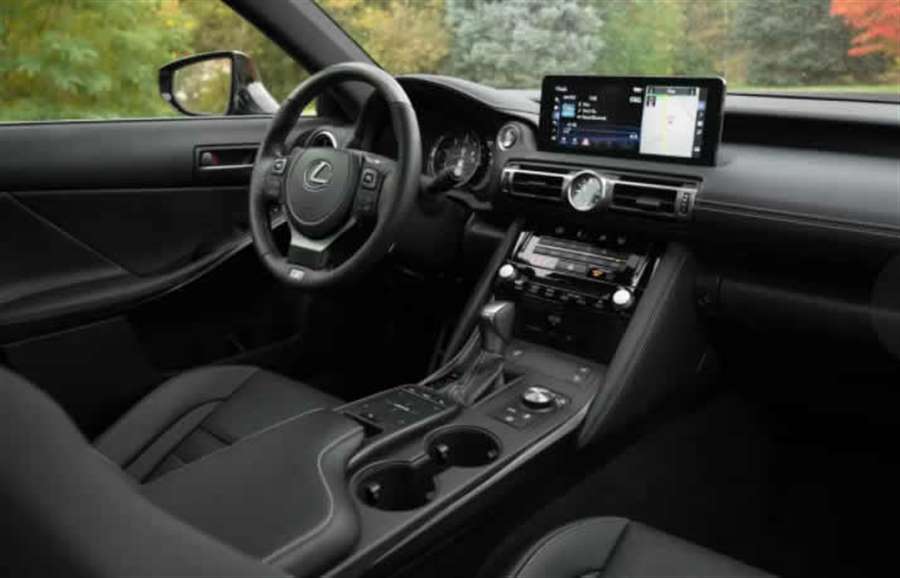
Acura did it with the new 2021 TLX, and now Lexus has done it with the 2021 IS 300 and IS 350. But has the redo and realignment of the IS gone far enough to keep it competitive against newer, fresher, faster rivals?
Looks a Bit Fresher
There are two models to choose from in the new IS lineup: the entry-level IS 300 with a 241-horsepower, turbocharged 2.0-liter four-cylinder engine, or the IS 350 you see here with its naturally aspirated 311-hp, 3.5-liter V-6. Either model can be had with rear- or all-wheel drive, but if you go for an IS 300 AWD, it actually comes with a less powerful, 260-hp version of the V-6 that also has less torque than the turbo four-cylinder. All RWD cars come with a standard eight-speed automatic transmission, while AWD cars come with a six-speed automatic.
Here’s where we start to see the new focus on making the IS a sporty sedan: The IS 300 F Sport is no longer a thing. You can’t get the F Sport handling and appearance package on that version — but all IS 350 models automatically come with the F Sport trim, meaning you can get an IS 350 only in F Sport guise. If you opt for the IS 350 (which you probably should given its significant power advantage over the IS 300), you’ll be getting this — a compact sports sedan with a 311-hp nonturbo V-6 carried over from the past model year with standard rear-wheel drive, an eight-speed automatic, a sport suspension, standard 19-inch wheels and more aggressive styling.
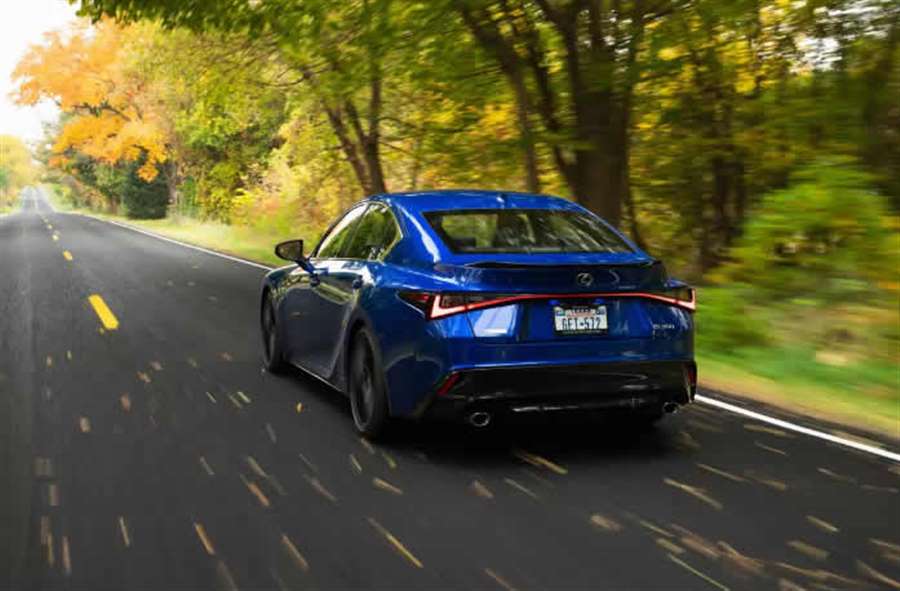
Lexus has updated the look of the IS for 2021, and I have to say that it’s a subtle but definite improvement. Those weird Nike swoosh signature LED lights up front have now been well integrated into the larger headlight assembly and look much, much better. The Lexus signature spindle grille is still here, but it’s either simply grown on us or just doesn’t look as offensive as it used to; either way, I think we’re finally used to it. The fenders are a tad wider to accommodate the bigger wheels and tires on the IS 350 F Sport, and a new trunk and rear bumper with a full-width LED taillight makes for more muscular-looking haunches. The Dynamic Handling Package available on the F Sport brings a couple of styling changes, too, including the addition of lovely matte-black 19-inch BBS wheels and a rather unnecessary carbon-fiber trunk spoiler. The overall changes have cleaned up the IS 350 considerably, giving it a lower, wider, more menacing appearance that’s less funky but more attractive.
Doesn’t Drive Any Differently
Out on the street, the new IS 350 really doesn’t feel that different from the last one. More than 300 horsepower might sound like a lot on paper, but 280 pounds-feet of torque isn’t all that impressive anymore, and it shows up in the IS 350’s rather underwhelming straight-line acceleration. Many of its competitors, such as the Acura TLX, Alfa Romeo Giulia, Genesis G70 and BMW 330, all employ turbocharged engines with torque that’s available low in the rev range, making for punchier acceleration than the IS 350 delivers. The IS certainly isn’t slow, but neither does it have the immediacy you’d expect when you floor the accelerator as you enter a highway on-ramp or pull out in front of traffic. Lexus’ given 0-60-mph time of 5.6 seconds isn’t exactly class-leading anymore. The eight-speed automatic transmission is well executed and does a decent job of providing smooth shifts, but it doesn’t seem quick or eager to kick down when you plant your foot, only adding to the more relaxed, slightly underpowered feeling the IS 350 delivers. Simply put, the IS 350 feels like it could use a more up-to-date engine and transmission combo, something that would boost its acceleration to match the more powerful and similarly priced offerings like the BMW M340i or Infiniti Q50 Red Sport 400.
There’s not much to fault with the IS 350’s handling, however. The suspension provides an excellent balance of comfort and responsiveness that really does impress with its sophisticated feel. For a bit more money, you can specify the Dynamic Handling Package for your IS 350 F Sport that includes an electronic adaptive suspension, adjusting the ride firmness and response via a mode selector on the center console. I honestly didn’t find that it affected the ride quality or steering effort noticeably if I switched from Normal mode to Sport S or Sport S Plus modes, but it did seem to wake up the powertrain with a more responsive throttle and allow more revs to build before shifting. Keeping it in Sport modes isn’t really conducive to serene driving, however, so you’re likely going to just keep it in Normal where the IS 350 proves to be a pleasantly quiet touring car that allows for faster cruising speeds than you might otherwise expect.
Time to Rethink the Interior
Inside, there have been a few changes to the IS 350 for 2021, but again the car is showing how much it could use a rethink to its whole platform. The interior mixes decent fake leather and nice ash wood accents on the F Sport with unremarkable plastic surfaces. One notable option is the Circuit Red interior, which truly looks stunning — sadly, my test car came outfitted with a more somber, less interesting black interior. You have a highly welcome new touchscreen front and center, which finally allows you to skip using Lexus’ remote control for the multimedia system. An 8-inch screen (measured diagonally) is standard, and the 10.3-inch screen in my test car is optional on vehicles equipped with navigation. It’s almost 6 inches closer to the driver than the previous screen, so it’s easier to see and reach. Apple CarPlay and Android Auto are standard, as is Amazon Alexa integration.
Lexus’ maddening remote joystick control has been replaced by a new touchpad, which is a bit better, but there’s no substitute for being able to touch the screen directly to do what you want to do. Thankfully, Lexus has finally realized that.
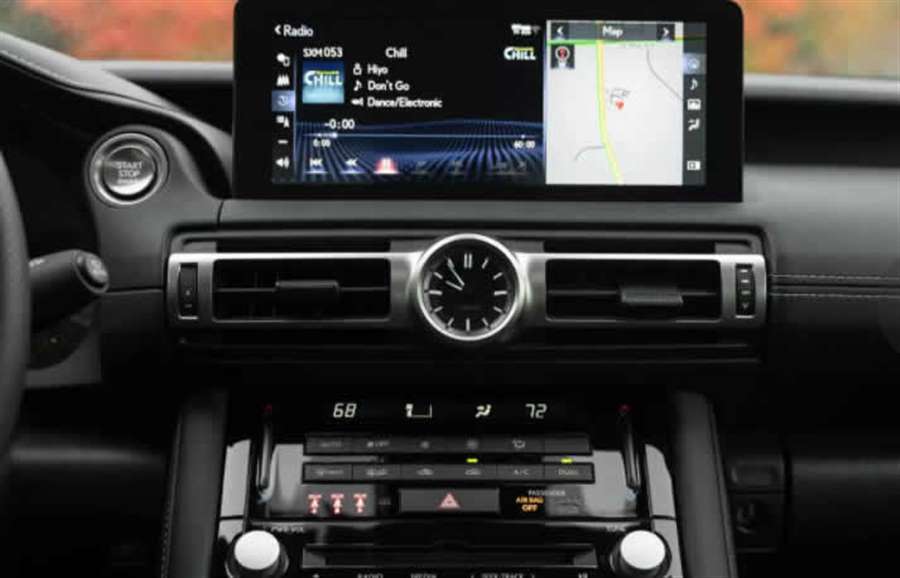
There isn’t much continuity to button design, with some buttons feeling large and well labeled, while others are tiny and hard to find, and still others are almost completely obscured from the driver’s view and difficult to use at all. The digital gauge cluster features an unusual sliding round master gauge that first appeared in F Sport versions of the IS and other Lexuses many years ago, inspired by the LFA supercar, but it honestly just seems needlessly gimmicky. And the fact that a bright green “Eco” light illuminates in the gauge cluster whenever the engine enters its fuel-saving mode is really annoying. In short, the IS 350’s interior layout and control strategy needs a modern redo.
But that’s not really the biggest issue with the interior. The IS 350 is cramped inside, with a narrow cabin and fairly tight seats. It features an unusually high driving position that feels as if the seat could stand to be an inch or two lower; more adjustability to the bottom cushion’s angle would be nice, too. The rear seats are also tight, with adequate room for two on short trips and decidedly more legroom than, say, an Alfa Romeo Giulia, but overall room in back feels about average for this category of sedan. There’s plenty of room in the trunk, and the rear seats do fold to allow for larger items. Yes, this is a compact sports sedan, and nobody’s expecting it to be a limousine. But its overall design aesthetic, packaging and control layout all seem to be in need of a more comprehensive update.
A Better Value Only on Base Models
The basic Lexus IS 300 RWD starts at $40,025 (all prices include destination), and my IS 350 F Sport RWD test car starts at a still reasonable $43,925, which rings in several thousand dollars less than the 2020 IS 350 F Sport thanks to Lexus’ new trim strategy. Add the moonroof, Dynamic Handling Package, navigation with premium Mark Levinson audio and a few other odds and ends, and you come to my car’s as-tested price of $55,220. That’s a little harder to swallow, frankly, given the other competitors you have at this price like a BMW M340i or Infiniti Q50 Red Sport 400, both of which outgun the IS 350 in the powertrain department. Or even opt for the new 2021 Cadillac CT5-V or Genesis G70 3.3T, both of which also feature more powerful engines for less money, accompanied by more modern interiors.
Lexus’ entry-level sports sedan is meant to be a good starting point for fans looking to get into the brand, and its refocused energy on capturing the few remaining sports sedan buyers with a more value-oriented F Sport model is commendable. But its updates for 2021 didn’t quite go far enough to make it a more competitive offering versus the considerably newer, fresher and more powerful competitors. Still, it has its looks and refinement going for it, along with Lexus’ reputation for reliability. If those factors weigh more heavily for you, then the new 2021 Lexus IS might be worth putting on your shopping list.
Cars.com’s Editorial department is your source for automotive news and reviews. In line with Cars.com’s long-standing ethics policy, editors and reviewers don’t accept gifts or free trips from automakers. The Editorial department is independent of Cars.com’s advertising, sales and sponsored content departments.
Source: cars.com

